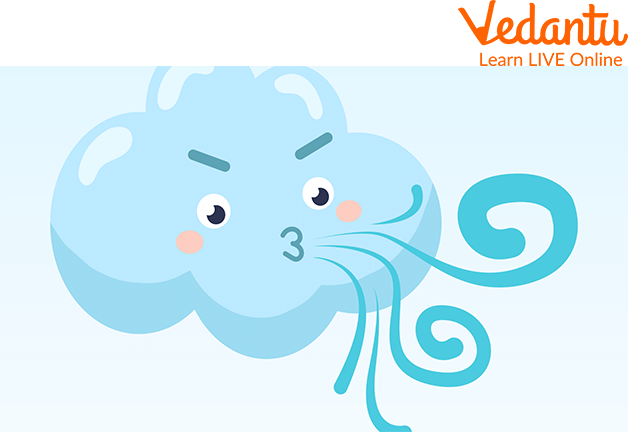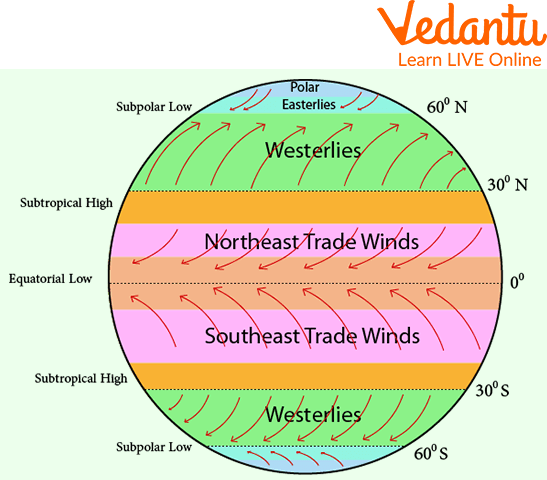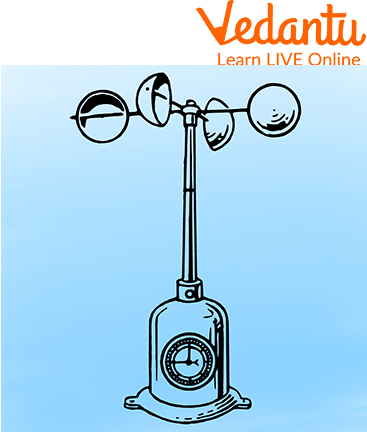




Overview About Wind
The term “wind” is very common, but it is important to understand what it means and how it works. Without understanding the basics of the subject, you could miss a lot of opportunities. The truth is that wind is invisible; we see only its effects. In simple terms, the wind is the visible movement of air that occurs naturally. In this article, we will learn more about wind from the basics to what makes the phenomenon worth studying in depth. In this article, we will talk about what causes wind and also know various facts about wind.

Wind
Wind Definition for Kids
According to scientific dictionaries wind definition for kids is as follows:
The wind is the motion of air over the surface of our planet. Wind can either cause a peaceful breeze or a powerful storm. When tornadoes, cyclones, and hurricanes form, the strongest winds are produced. The wind is a result of changes in the temperatures of the air, land, and water. A warm surface causes air to flow over it to heat up and rise. Cooler air can now enter thanks to this opening. The wind is the moving air.
Wind Speed
Wind speed is the speed or the moment of air in the environment. Wind speed is the phenomenon that is used in various areas to study weather and various operations related to driving aircraft or marine vehicles. High wind speed can cause various calamities whereas a blessing wind or a normal Wind can be pleasant and aesthetic for everyone.
What Causes Wind?
As the warm air rises it leads to the formation of low-pressure locations in the lower positions as the cold particles are more tightly bound up together and tend to descend into those low-pressure locations created by the vacancy of warmer air.
The wind is created by this phenomenon of the movement of cooler air to depositions of former air and the warmer air going to a higher position and vice versa, because of the molecules which move within the region of heating and cooling. This was the answer to what causes wind.
Types of Winds
The various types of winds are named after the direction from which they are coming or can also be named after the direction towards which they are moving.
Permanent Winds
These blow over larger areas and blow in the same direction the whole year. These have another name as well, they are also known as Planetary winds. Permanent winds are themselves classified into different types of winds such as:
Trade winds flow from subtropical high-pressure belts to equatorial low-pressure belts.
Westerlies flow from subtropical high-pressure belts to sub-polar low-pressure belts.
Polar winds flow from sub-polar low-pressure belts in polar areas.
Seasonal Winds
These winds, as their name is seasonal i.e. they change their direction according to the season. Seasonal winds are classified into:
Monsoon winds are often found in Asia and bring rain.
Land breeze and sea breeze, these winds flow over land and sea respectively.
Mountain breezes are the winds which fill the gap in the mountains which is made by the hot air that rises during the day.
Local Winds
These winds are the local winds blowing in a particular locality.

Types of Winds
Wind Facts for Kids
The wind is an astonishing naturally occurring phenomenon. Below are some interesting facts about wind:
The instrument used to measure wind speed is called an anemometer.
The unit used to measure the wind speed is called a knot.
The wind is used as the source of energy in wind turbines to produce electricity and various other kinds of energy.
The winds are the source of power that helps ships sail through the huge oceans.
Many sports are based on winds and in activities like kiteboarding, windsurfing, sailing and paragliding.
Planets that face the fastest planetary winds are Saturn and Neptune.

Anemometer
Summary
To conclude all the conceptual understanding regarding wind in this article we can say the wind is the movement of air in the atmosphere of our planet. It helps in bringing variations in climatic conditions and is used for varied purposes. The wind is used to harness energy. There are also various activities designed to take advantage of the wind and make our lives interesting and fun. The wind is a very useful phenomenon that helps humans and all living creatures in some ways. With this, we would like to end the learning about the wind here. We hope this article was helpful to you, in case of any other doubts feel free to ask in the comments.
FAQs on Wind
1. How are the winds named?
Winds are named according to the direction in which they flow. For example, a wind flowing from west to east is known as westerly.
2. What is wind made up of?
The most straightforward description of wind is simply a mixture of air molecules moving swiftly. There are numerous different types of molecules in the air you breathe. The bulk of the air you respire is made up of nitrogen (78%) and oxygen (21%). There is water vapour in addition to these two elements.
3. What types of winds are damaging and destructive?
To distinguish their impact from tornado damage, destructive winds are frequently referred to as "straight-line" winds. Numerous processes can produce powerful thunderstorm winds. The majority of thunderstorm winds that destroy property on the ground occur from outflow produced by a downdraft. Wind speeds of 50 to 60 mph are considered damaging.









